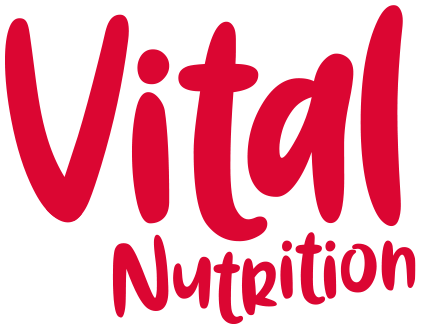Portion distortion
From supersized meals to cutting back on calories, figuring out portion sizes can get be confusing. The good news is that there are some really easy tricks to help you work out how much is enough, or too much, on your plate.
5 a day
We all know the 5 a day message, but even this can get lost in translation. Someone once asked me if they ate a pea and a blueberry, would it count as two of their five! Officially one portion of fruit or vegetables is 80g, but that doesn’t mean that you have to start weighing everything that you eat. As a rough guide, one portion is about the size of your fist. The more variety you can get on your plate, the better. One way way to do this is to mix up your fresh fruit and veg with some frozen stuff. I like frozen berries for a quick addition to breakfast, frozen spinach as an easy green to add to curries or omelettes, and broad beans – simply because I love them! Choose the varieties that you like. Look out for selections of root veg or Mediterranean veg that you can roast, mixes with herbs for steaming, or oriental mixes that are handy for the base of a mid-week stir-fry.
When you look at your lunchbox or dinner plate, aim to include two portions on your plate. One with breakfast and you are hitting the five a day, no trouble at all.
Protein power
Protein is hot news, but working out how much is enough to meet your needs can test your maths. As a rough guide, most of us should aim for about 1g protein per kg of body weight – a bit more if you do a lot of exercise, are older, or are hitting peri-menopause.
20-25g protein at each meal is not the same as 20-25g tuna, chicken or cheese, but you know that I like to keep things simple, so here is an easy guide. Aim to have a palm sized portion of a protein-rich food on your plate. Choose foods like meat, fish, nuts and seeds, pulses, natural or Greek yoghurt, cottage cheese. Protein is not stored, so you will need to include palm-size portion at each meal.
Starchy carbs
Starchy foods like rice, pasta, noodles, bread and cereals are the foods that we love to overindulge in, but it is probably not doing you any favours. Remember that the main function of carbohydrate in the body is for energy, so if you are not burning off all that starchy energy, you might notice it as extra fat.
We do need to eat carbohydrates, just not as much as we think we do! There is no need to double carb with garlic bread alongside our pasta, or naan bread and rice with our curry.
Think about getting better quality carbohydrates – you know the stuff with more fibre, like brown rice, wholemeal bread, wholewheat pasta, porridge oats and the like.
Once you increase your fibre, you will find a little goes a long way. The fibre will help you to feel fuller for longer, so it will be easier to reduce your portion size a little if you need to.
Aim for one fist-size portion (or about a quarter of your plate) as your carbohydrate portion.
Healthy fats
Omegas and unsaturates are really important for good health. Get into the habit of thinking about the healthy fats at each meal. Add a drizzle of olive oil (about a dessertspoonful) to salads or steamed vegetables, eat a tablespoonful of nuts and seeds most days and include oily fish like salmon, mackerel and sardines two or three times every week.
Water
Keeping well hydrated can help with energy levels, skin, digestion and so much more. It is recommended that we drink six to eight glasses of water a day, but of course it depends on what size your water glass is. A more accurate plan is to aim for one and a half litres (or three pints) of water a day.
If this is new to you, then start by having one glass a day and build up gradually from there.
Make gradual changes to the balance on your plate and soon you will end up better nourished, better hydrated and feeling better for it.

